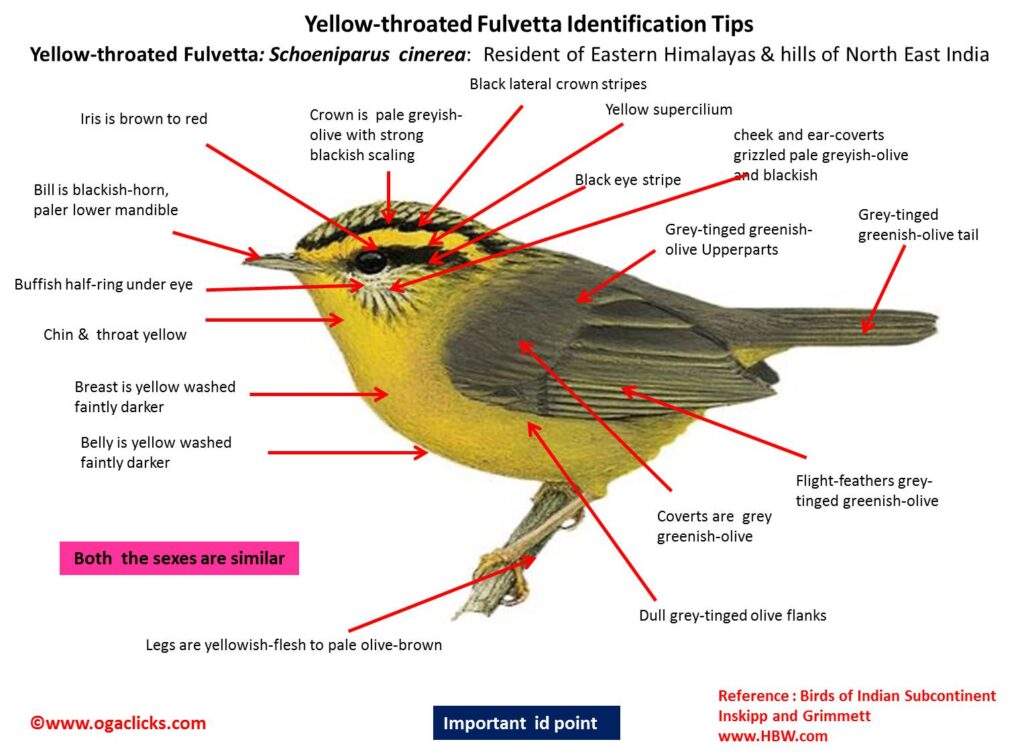
Yellow-throated Fulvetta Pseudominla cinerea
Etymology:
- Pseudominla : Greek word pseudos – false ; genus minla. { False minla}
- Cinerea : Latin word cinis, cineris – ashes { Ashy grey}
Vernacular Names: Cachar: Dao-pere kashiba
Distribution in India: Resident of eastern Himalayas and hills of North East India.
Description: Size of 10–11 cm; wt. of 8–13 g. It is very small green-and-yellow babbler with long black-bounded yellow supercilium. The crown is pale greyish-olive with strong blackish scaling, long blackish lateral crownstripe from above eye to nape. The upperparts are grey-tinged greenish-olive, upperwing and tail is slightly darker; broad full-length orange-tinged yellow supercilium, long blackish eyestripe, buffish half-ring under eye, short blackish moustachial streak. The cheek and ear-coverts are grizzled pale greyish-olive and blackish. The chin to middle belly is yellow, washed faintly darker across breast, neck side to flanks are dull grey-tinged olive, more olive on lower flanks; iris is brown to red; bill is blackish-horn, paler lower mandible; legs are yellowish-flesh to pale olive-brown. Both the sexes are similar.
Habitat: It is found in broadleaf evergreen forest, often by glades, tracks, stream sides and other more open areas, bamboo clumps and cut-over scrub. It is found from 600–2800 m.
Food habits: It eats invertebrates. It frequents dense undergrowth and understorey. Outside breeding season it is found in small parties in association with mixed flocks which can contain other small babblers. The flocks move very quickly, generally keeping close to forest floor.
Breeding habits: They breed in Apr–Jul in Indian Subcontinent and Myanmar. The nest is a deep cup, sometimes a dome or semi-dome, made of bamboo leaves, grass blades and fern fronds, bound together with tendrils and roots, lined with fine shreds of grass, bamboo leaves and rootlets, placed on ground, sometimes between boulders, or low down in bamboo clump or bush. They lay a clutch of 3–4 eggs.